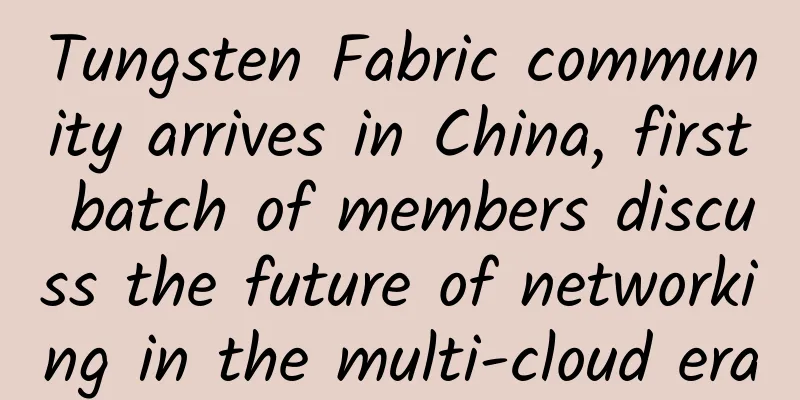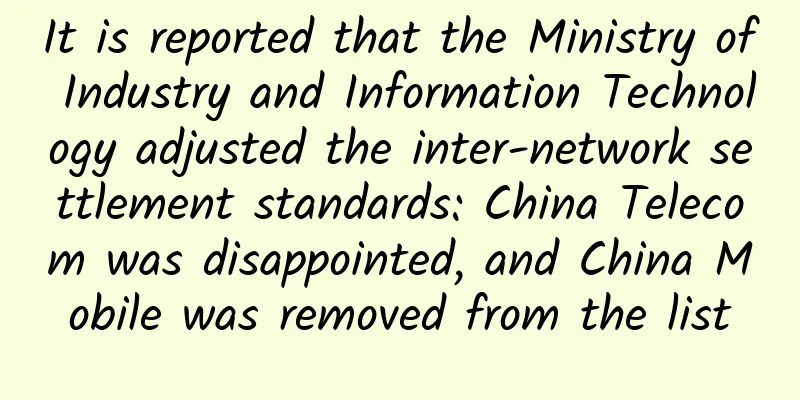Tungsten Fabric community arrives in China, first batch of members discuss the future of networking in the multi-cloud era

|
[51CTO.com original article] On November 7, as an important part of the open source community in the multi-cloud era, the Tungsten Fabric Chinese community was established and the first general meeting was held at the Qingdao campus of Shandong University. Tungsten Fabric's predecessor was the open source community OpenContrail, which was open sourced by Juniper Networks and renamed in 2017 and hosted by the Linux Foundation. Its mission is to build a ubiquitous, easy-to-use, scalable, and secure cloud-level SDN stack that provides a network structure that can connect different environments. The community currently has a large number of vibrant developers and end users around the world, and this is the first time that a Chinese community has been established in China.
Founding members of the Tungsten Fabric Chinese community at the launch ceremony At the conference that day, important guests such as global big names in the open source community and representatives of well-known domestic companies were invited to attend. Together with the first batch of community members and many Chinese developers, they shared the trends of national independent innovation and global cloud network, discussed the framework and development of China's open source cloud network, and the future of the TF community in China. During the break of the meeting, the reporter interviewed these keynote speakers and asked them to share their thoughts on the development and future of domestic open source. Open source has a promising future, TF brings innovative support to the Chinese market Xie Chaoyang, chief scientist of China Unicom, highly affirmed the value of Juniper Networks' leading role in establishing the TF community in China. He believes that open source is conducive to the development of China's IT and its independent and controllable development. "The establishment and development of the TF community in China is actually promoting the growth of open source power. In the future, open source in China will definitely develop in a healthier direction." He took telecom operators as an example. On the premise of ensuring the stability of the existing communication infrastructure, telecom operators have also applied a large number of open source technologies and have always embraced open source. "China Unicom has joined the TF community and become a contributor."
Sukhdev Kapur, Distinguished Engineer, Juniper Networks Sukhdev Kapur, an expert of Tungsten Fabric Technical Steering Committee and a distinguished engineer of Juniper Networks, told reporters that Juniper Networks is not the governance body of TF. The TF community has truly grown up according to the standards of an open source community and operates according to the mechanism of joint governance by community activists. He introduced that the TF community has very close cooperation and development with other open source communities, such as OpenStack and Kubernetes. The TF community initially focused on virtual machines and basic bare metals, and later also paid attention to containers. Now it has become a full-service architecture. "Juniper Networks has always been an active contributor to the open source community and has contributed many new features to the TF community, mainly innovations in the edge cloud and multi-cloud fields." Sukhdev Kapur also has a clear understanding of the value of TF. "The TF community can provide very good value to the Chinese market, and it has the foundation for prosperity and development." As an expert on the Tungsten Fabric Technical Steering Committee, Sukhdev Kapur pointed out that after enterprises go to the cloud, if they use open source projects to support production-level deployment, TF is a very good choice in the SDN field. He explained that because TF is already a well-tested, mature, and widely used open source project, it is fully ready for the cloud and is very suitable for the cloud. More importantly, TF is very convenient and easy to operate for enterprise deployment. "Every day we have more than a hundred engineers constantly promoting the development and innovation of TF technology." TF landed in China at the right time Sukhdev Kapur said that the community is still aiming for rapid growth and hopes to attract as many developers and users as possible to join the community. Ye Yong, general manager of Juniper Networks Enterprise Division in China, added that Juniper Networks has conducted rigorous research in China. In the multi-cloud era, many enterprise customers are facing cross-cloud management issues, the most critical of which is the network. In the past two or three decades, enterprise networks are often independent architectures and lack decoupling, so management is very difficult. This is exactly where TF comes in and can meet the needs of enterprises for multi-cloud networks. Not only that, Chinese developers are increasingly involved in open source. As a member of the open source community, Juniper Networks hopes to make the TF community bigger and stronger and jointly solve problems in the cloud migration process.
Ye Yong, General Manager of Juniper Networks Enterprise Business Unit in China Li Mingjun, general manager of Teamsun Cloud Computing R&D and Product Center, also agrees with Ye Yong's view. He said that more and more customers have explicitly requested to deploy an open cloud framework, because closed source means that in the future, whether it is hardware equipment, network, virtualization, or the function of connecting to various virtualized resource pools, they may be locked by a single manufacturer. He said that in the cloud platform market, KVM, OpenStack, and container K8S have been widely used, but in the network field, there is no open source project like TF that has truly experienced the test of production environment and can meet the needs of enterprise customers in terms of functionality. "So at this point in time, the establishment of the TF open source Chinese community is just in time." Create a Chinese-style interactive mechanism to create a virtuous cycle of giving back to the community How to establish a community mechanism that is more in line with Chinese characteristics and enable better interaction between the Chinese TF community and the global TF community? Different guests shared their views from their own perspectives. Sukhdev Kapur said that in the future TF will invite some people in China to serve as TF Chinese ambassadors and act as liaisons to achieve interaction between China and the global community. Ye Yong told reporters that there are significant differences in application scenarios between China and abroad. Chinese users and developers are more familiar with domestic needs. TF is establishing a technical committee system, which is voluntarily joined by community participants. By operating a platform, all parties can be integrated into it. On the one hand, it can solve the problems of the domestic industry, and on the other hand, it can seamlessly connect with the international community. At the interview site, the reporter also interviewed Yang Yu, a technical representative of the TF community. He is a developer and a contributor to the founding of the community. He believes that when there is an urgent need in the Chinese market, corporate users and developers can use the power of the local community to develop. After the development is completed, everyone can give back to the international community, forming a virtuous circle. As a community developer, Yang Yu said that contribution to the community actually represents the developer's recognition and pursuit of technology. As the community grows, the community ecology becomes more prosperous. Outstanding contributors can establish their image in various technology companies through their contributions in the community, and their technical value and personal influence are improved. "More importantly, in the process of contributing to the community, individual developers can learn the community's norms, including a complete set of coding, compilation and code management processes." TF has the natural genes of commercial products, and the commercial version is more favored by large customers During the interview, Juniper Networks also mentioned the commercial version of TF. Sukhdev Kapur told reporters that the open source code of the commercial version of TF is exactly the same as that of the open source version, but it has better service support based on open source. Currently, international telecom operators and large enterprises prefer to use the commercial version. Li Mingjun revealed that different types of customers have different preferences. For example, some customers require source code to be controllable, so the source code of the entire project must be open to the public, so they will give priority to the open source version. Some customers have higher requirements for service capabilities and product commercial packaging, so they will consider the commercial version more. Ye Yong told reporters that, unlike many open source communities, the TF community first had a mature commercial product with many business cases, and then it was open sourced. The code consistency between the commercial version and the open source version is very high, which makes TF's natural genes more suitable for commercial applications. It has a very high starting point and maturity, and can be directly used in production environments. As a bridge between foreign communities and domestic developers, the Tungsten Fabric Chinese community will unite all forces interested in multi-cloud interconnection networks to effectively solve the problems encountered in the process of cloud network construction. Today, Juniper Networks is actively assisting the construction of the Tungsten Fabric Chinese community, helping to cultivate more technical talents who understand open source, achieve continuous technological progress, and accelerate China's digital transformation process. [51CTO original article, please indicate the original author and source as 51CTO.com when reprinting on partner sites] |
<<: Why Wi-Fi will not disappear but become more important in the 5G era?
>>: The first batch of 5G users complained: 30G was spent in 2 days!
Recommend
SDN, the new decade, rethinking: the transformation has shown its edge, and the dawn of intelligence is beginning to emerge
Technological innovation remains the most appropr...
zorocloud: US CN2 GIA line VPS monthly payment starts from 34 yuan, including DDoS protection
Zorocloud is a domestic hosting company that was ...
Learn more! The principles behind Wi-Fi revealed!
Wi-Fi and 4G/5G cellular networks are the two mos...
2019 Global Trend Conference 5G Ecosystem Cooperation Forum 5G era brings infinite imagination to the future
From November 28th to 29th, the "2019 Global...
Upgrading to 5G packages is easy but canceling is difficult. You need to go to the business hall to handle it. Operators respond
In the past period of time, the three major opera...
Internet services for the elderly have been standardized
In order to help key groups such as the elderly a...
What can 5G messaging bring to industry customers?
5G messaging is planned and built based on the GS...
China's three major operators finally gave in, reducing 5G package fees, netizens: Still can't afford it
As we all know, since the end of 2018, countries ...
Byte side: TCP three-way handshake, very detailed questions!
Hello everyone, I am Xiaolin. A reader was asked ...
How to identify the protocol of an unfamiliar CAN network?
In a CAN network, all nodes share a bus for data ...
DogYun Fantasy Beast Palu server pre-sale 400 yuan/month-2*E5-2680v4/128G memory/1TB SSD/50M input 40M output
DogYun (狗云) has launched a pre-sale activity for ...
The third and fourth largest operators in the United States announced a merger. Can China Telecom and China Unicom follow suit?
On April 29, T-Mobile, the third largest telecom ...
How professionals can develop their latest data center skills
When there are a plethora of industry certificati...
iOVZ VPS in March 20% off monthly payment and 30% off annual payment, South Korea/Los Angeles data center available
iOVZ Cloud has launched a regular promotion in Ma...
How to collect intranet information
The essence of penetration testing is information...









